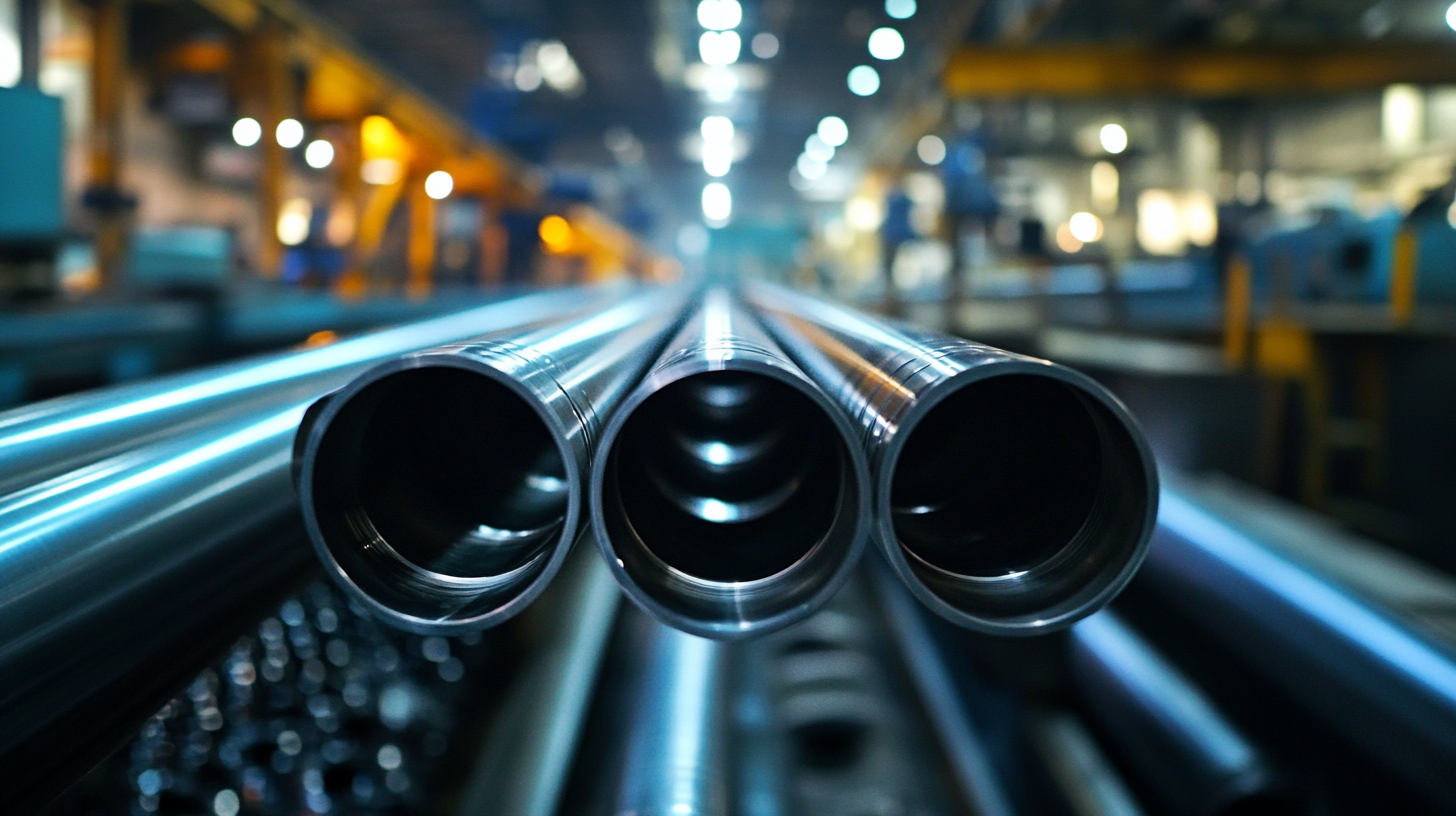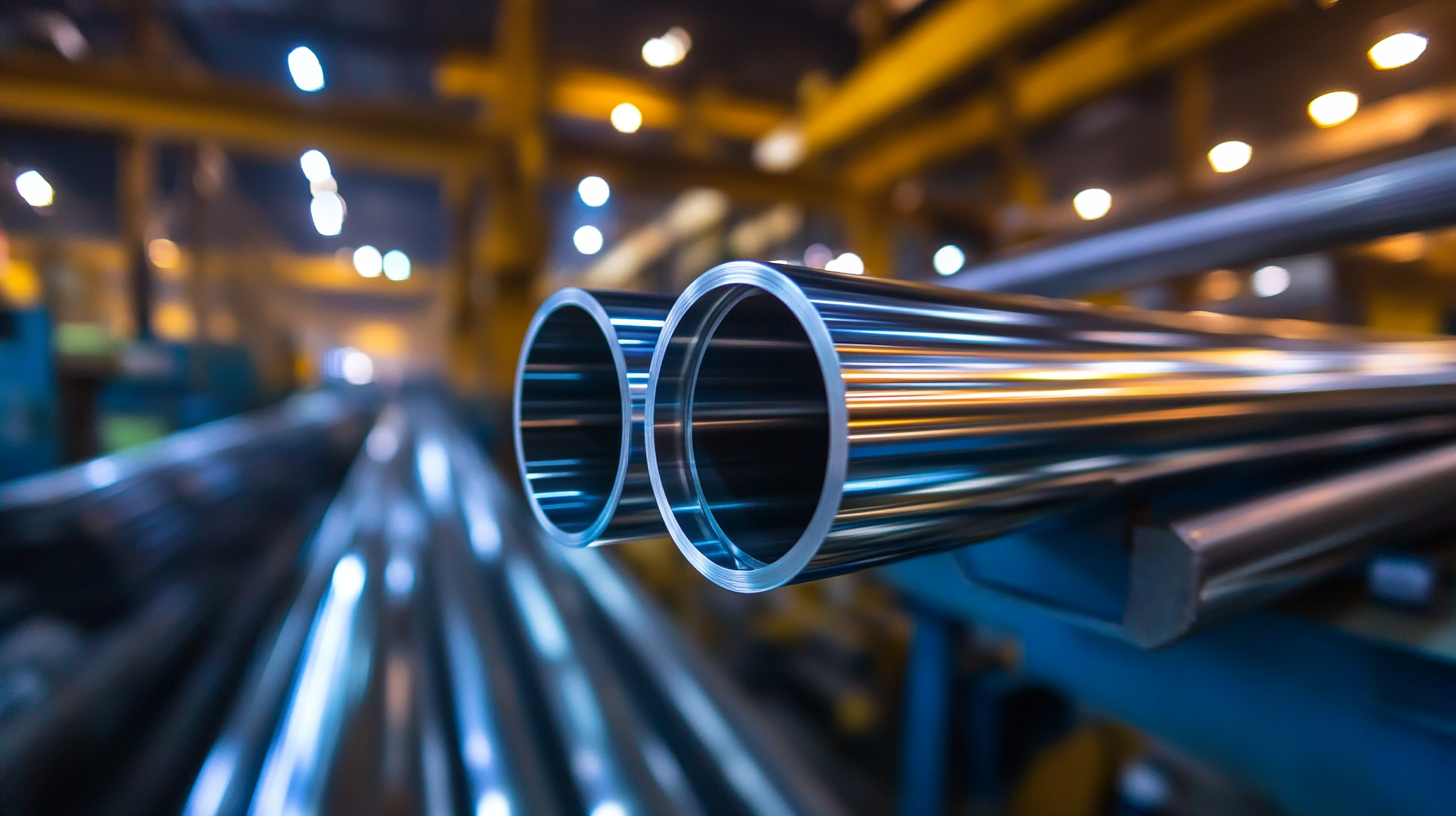Leave your message now to get your free sample and discount price
Leave your message now to get your free sample and discount price
In the face of escalating US-China tariff challenges, the resilience of Chinese manufacturing continues to shine, particularly in the production of high-quality Tungsten Carbide Tube. As trade tensions have intensified, many manufacturers have had to navigate a complex landscape of tariffs and regulations; however, the demand for superior industrial materials—such as Tungsten Carbide Tube—has remained robust. This vital component is not only known for its exceptional hardness and durability but also plays a crucial role in various applications ranging from drilling and mining to manufacturing and construction. Amid these challenges, Chinese manufacturers have adapted and innovated, leveraging their expertise in Tungsten Carbide Tube production to maintain competitive pricing and superior performance. As they confront external pressures, the success of these manufacturers underscores the significant role that advanced materials play in sustaining growth and meeting global demands.

In the current landscape of global manufacturing, the US-China trade tensions are fundamentally reshaping industry dynamics. As tariffs have escalated, affecting a wide range of sectors, the implications for manufacturers in both countries are profound. For instance, the introduction of a blanket 10% tariff on all imports has driven many companies to reassess their supply chains and operational strategies. Notably, a recent analysis indicated that the drone industry is experiencing shifting price structures as tariffs alter the cost balance between Chinese and U.S. manufacturers. This complexity highlights the necessity for agile adaptation in response to fluctuating trade regulations.
**Tips:** To successfully navigate these turbulent waters, companies should consider diversifying their supply chains. This may mean sourcing materials from alternative regions or investing in local production capabilities. Additionally, staying informed about tariff changes and potential trade agreements can empower businesses to make proactive, informed decisions.
As manufacturers like those producing tungsten carbide tubes face these challenges, leveraging data and analytics becomes essential. More than ever, the ability to predict market shifts and consumer demand patterns will be crucial for maintaining competitiveness. Engaging in strategic partnerships and exploring reshoring opportunities can also mitigate risks associated with international trade disputes, ultimately positioning businesses to thrive in a redefined global market.

In the face of ongoing US-China tariff challenges, Chinese manufacturing has found a competitive edge in the production of tungsten carbide tubes. Innovations in tungsten carbide technology have led to significant improvements in the quality and efficiency of production processes. According to a recent market report, the global tungsten carbide market is expected to reach $28 billion by 2026, with a CAGR of 7.5%. This growth is primarily driven by advancements in manufacturing techniques and the rising demand for durable materials in various industries, including aerospace, automotive, and construction.
To maintain a competitive position, manufacturers are increasingly investing in research and development. This has resulted in the creation of innovative tungsten carbide formulations that enhance wear resistance and extend the lifespan of products. For industry professionals, it's crucial to focus on adopting these cutting-edge technologies. Tips for staying ahead include regularly attending industry conferences, exploring collaborative R&D initiatives, and leveraging analytical tools to optimize production efficiency.
Moreover, understanding the market trends can provide valuable insights. As companies adapt to shifting demands, they should prioritize sustainability and eco-friendly production methods, which are becoming essential in securing contracts and meeting regulatory standards. By embracing these innovations and market strategies, Chinese manufacturers can not only survive the tariff challenges but also thrive in a competitive global landscape.
Chinese manufacturers have demonstrated remarkable resilience in the face of increasing trade barriers, particularly amid the evolving US-China tariff landscape. As tariffs on various goods escalate, the adaptability of these manufacturers has become paramount. Data from the Ministry of Industry and Information Technology indicates that in 2022, the Chinese manufacturing sector continued to grow, with a 5.2% increase in output despite external challenges. This growth has been significantly bolstered by the production of high-quality tungsten carbide tubes, which are essential in various industrial applications including mining and construction.
To navigate the complexities of trade barriers, Chinese manufacturers have pivoted towards enhancing the quality and cost-effectiveness of their products. According to a recent report by the China National Machinery Industry Corporation, the export value of tungsten carbide tools rose by 8% in the last financial year, showcasing a strategic shift towards higher-value offerings. Manufacturers are investing in advanced technology and sustainable practices to remain competitive, ensuring they not only satisfy domestic demands but also penetrate new markets while mitigating the impacts of tariffs. Such proactive measures underline the sector's tenacity and commitment to overcoming the challenges posed by international trade dynamics.
In recent years, the Chinese tungsten carbide manufacturing sector has not only shown resilience amidst the challenges posed by US-China tariffs but has also made significant strides in implementing sustainable practices. As the demand for high-quality tungsten carbide tubes continues to rise, manufacturers are increasingly adopting eco-friendly processes to minimize their carbon footprint while maintaining production efficiency. This commitment to sustainability not only enhances their reputation on the global stage but also aligns with the growing consumer demand for environmentally responsible products.
One key aspect of sustainable practices in this industry involves the use of recycled materials. By reclaiming tungsten from scrap, manufacturers can significantly reduce waste and lower their raw material costs. Additionally, innovations in energy management—such as incorporating renewable energy sources and optimizing machinery for energy efficiency—are becoming prevalent in tungsten carbide production. These initiatives not only help companies comply with stringent environmental regulations but also demonstrate a proactive approach to corporate social responsibility, ultimately benefiting both the planet and the businesses involved.
In the current landscape of US-China trade tensions, Chinese manufacturing exhibits remarkable resilience, primarily driven by innovation in sectors like tungsten carbide production. As tariffs increase, manufacturers are not just adapting; they are thriving. The surge in demand for advanced materials such as tungsten carbide tubes highlights how Chinese firms are leveraging technology and embracing high-quality manufacturing practices. This agility allows them to maintain competitiveness against tariff pressures, paving the way for a robust supply chain that is both diversified and efficient.
Looking forward, the future of Chinese manufacturing will likely hinge on its ability to integrate advanced technologies across production processes. As the global economic framework becomes increasingly unpredictable, Chinese manufacturers are strategically investing in research and development to enhance product offerings and optimize operational efficiency. By focusing on building a resilient industry structure, they are setting a precedent that transcends the immediate impacts of tariffs, ensuring long-term growth and stability in an era marked by uncertainty. This proactive approach may very well shape the trajectory of the global manufacturing landscape.

